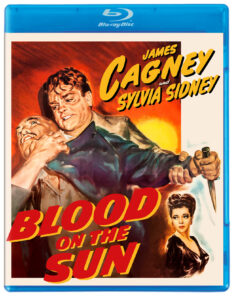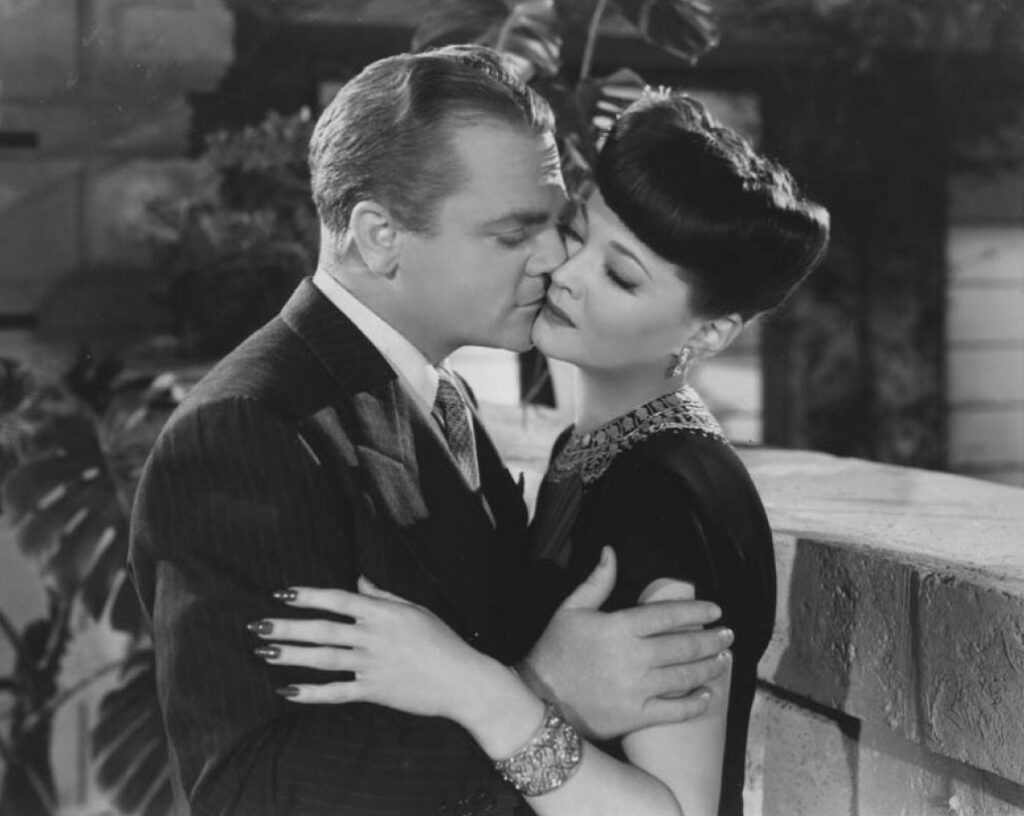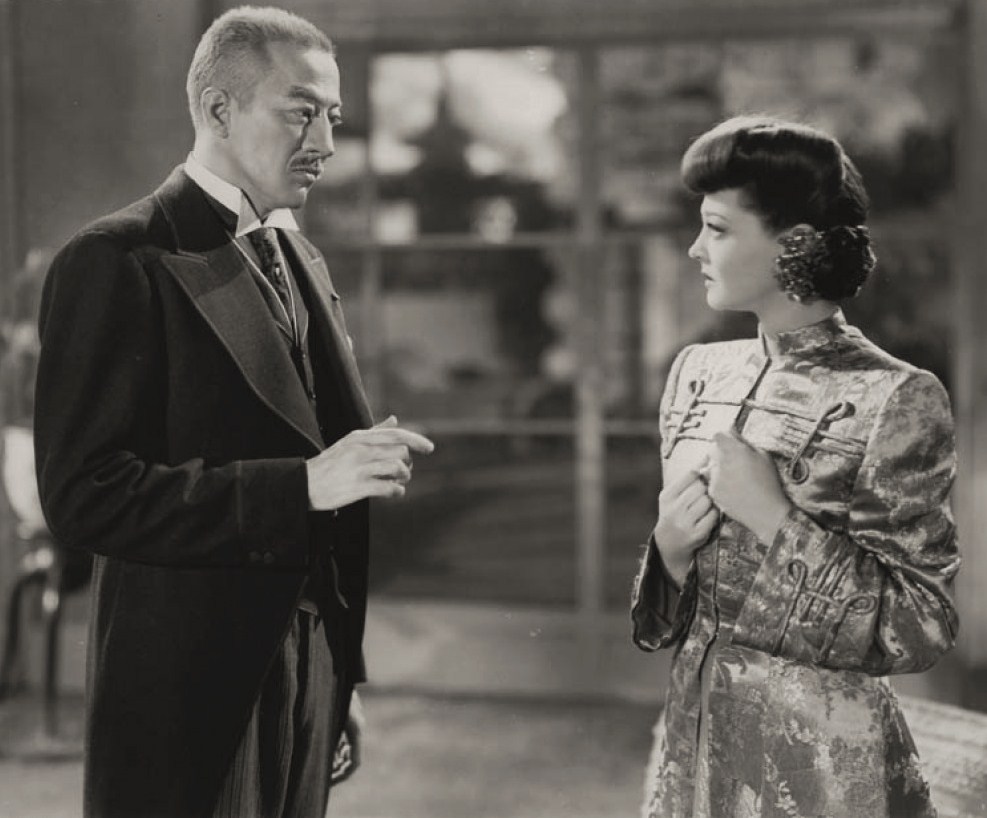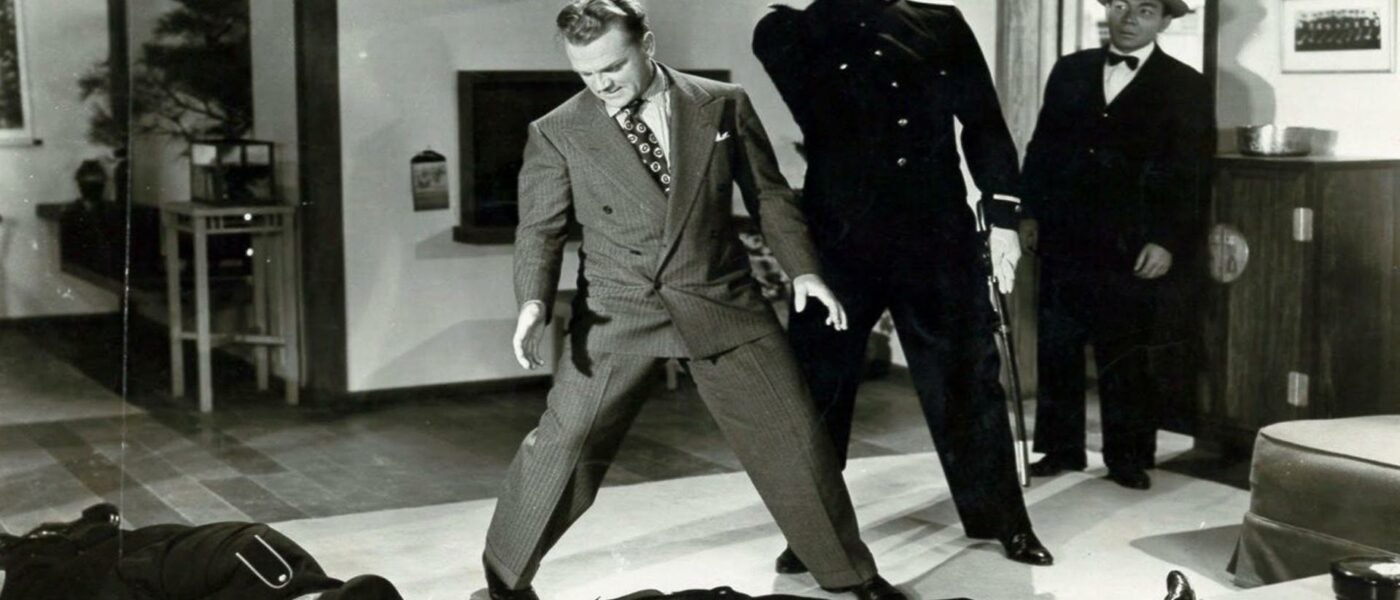James Cagney Takes on “the Japanese Hitler”.
DIRECTED BY FRANK LLOYD/1945
BLU-RAY STREET DATE: FEBRUARY 13, 2024/KL STUDIO CLASSICS

In 1945, the notion of (as this film regretfully phrases it) a Japanese-based “Oriental Hitler” who’s been secretly plotting world domination resonated with American audiences for obvious reasons. Blood on the Sun, a kind of “mini-major” wartime propaganda effort starring a then-freelance James Cagney and produced by his brother William Cagney for their company, takes this lurid premise, and runs with it.
Set in 1929 Japan, Cagney plays a seemingly slippery American newspaper editor working the publication’s remote bureau. Mix-ups with the Japanese Secret Police lead to murder and intrigue as fast-talking fedora-wearing western journalism meets traditional kimonos, honor, and shoji screens of the Edo era and earlier. Cagney’s character falls for a key player in the caper, a half-Chinese woman with increasingly conflicting loyalties played by Sylvia Sidney in yellowface makeup and Sean Young’s Blade Runner hairdo. Cultural insensitivities aside (Blood on the Sun is lousy with yellowface performances, including an imposing John Emery as Premier Giichi Tanaka), Sidney brings a necessary sense of assurance mixed with vulnerability.
The infamous Tanaka Memorial, a Japanese point-by-point strategy to take over the world ostensibly devised by Prime Minister Baron Tanaka Giichi lies at the center of Blood on the Sun. Today, the historic validity of the Tanaka Memorial has been all but debunked by historians, but back then, it was utter fire. Even Frank Capra enthusiastically included it as fact in his seminal World War II propaganda series “Why We Fight”. It should be no surprise, then, that the Memorial would be ideal fodder for a fictionalized Hollywood wartime potboiler such as this. (And yes, this 100% Japanese-set film was shot entirely on Los Angeles soundstages).

Blood on the Sun is directed by Frank Lloyd (he of the Best Picture Oscar winner Cavalcade) with a disappointingly inertness that betrays the plot’s espionage-esque urgency. It also doesn’t help that the film is steeped in late-1920s Japanese/Chinese tensions and is off and running with precious little contextualization. Cagney gives it everything he’s got in the way of his trademark charisma, punching and socking someone in the jaw every few minutes. This despite that his character, a multilingual man of the world, is introduced as a formidable judo expert. As audio commentators Julie Kirgo and Peter Hankoff discuss on the KL Studio Classics Blu-ray, judo may be all well and good in a Hollywood movie of this time, but when push literally comes to shove, nothing can beat a good ‘ol American knuckle sandwich. That’ll have ‘em seeing stars (if not stripes)!
KL’s Blu-ray release of Blood on the Sun rescues the film from the public domain hell it’s been languishing in for decades. The image quality is richly impressive, as it’s been sourced from a 2020 HD master by Paramount Pictures taken from a 4K scan of the 35mm nitrate materials. The new commentary by film historian/writer Kirgo and writer/filmmaker Hankoff maintain a terrific chemistry throughout as they chat up the film and the history it’s based upon.
Kirgo, a fan of Cagney, makes good with plenty of facts and stories about him in the context of this film. Hankoff, who’s made somewhere in the neighborhood of twenty WWII documentaries, handles a lot of the historical details, going so far as to call the Tanaka Memorial “fake news” of its day. A lot of ground is covered, but listeners should be warned that they modify and correct several facts they share along the way. So don’t take everything they state in the first twenty or so minutes as gospel. In any case, better late than never for corrections when it comes to unedited commentary recording such as this one. Finally, KL also provides a low-resolution trailer for the film.

Blood on the Sun is a more interesting idea for a movie than an engaging one, but the actors, particularly Cagney, do their best to bring it to life. With its yellowface performances and deeply baked-in distrust of Japan, the film makes for a less-than-comfortable sit in this day and age. Produced in the time of impending victory over the Japanese, it’s understandable that audiences and filmmakers alike would be far from ready to digest a more levelheaded depiction of the land of the rising sun. (Not to mention that most authentic Japanese American actors were probably in internment camps- another brutal reality lingering in the periphery of this movie). Such acknowledgement makes Cagney’s all-too-telling last line, “Forgive your enemies, but first get even!”, seem perhaps slightly progressive.


